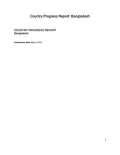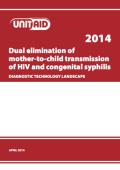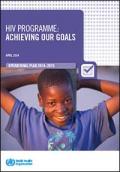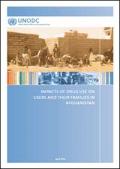What's New
Displaying results 3281 - 3290 of 4914

Resource | Publications,
Various levels of stakeholders from government, civil society and UN agencies actively engaged in preparing the Global AIDS Response Progress Report (GARPR), 2014 for Bangladesh and the National AIDS/STD Programme (NASP) of the Ministry of Health and Family Welfare, Government of Bangladesh, facilitated the process with UNAIDS support.

Resource | Fact Sheets,
The first CRiSP (Community Based Risk Behavioural and Seroprevalence Survey for Female Sex Worker in Hong Kong) was launched in 2006 and it was repeated in 2009. HIV prevalence among female sex worker (FSW) in Hong Kong was found to be maintained at a low level in these two rounds of CRiSP, 0.19% and 0.05% respectively. Organized as a regular public health surveillance programme, a similar integrated biobehavioural survey for FSW, incorporated into the new HARiS (HIV/AIDS Response Indicator Survey) programme, was conducted in 2013 via commissioning to the Stanley Ho Centre for Emerging Infectious Disease, School of Public Health and Primary Care of the Chinese University of Hong Kong.

Resource | Fact Sheets,
In Hong Kong, the number of HIV cases transmitted through injecting drug use (IDU) has remained low up till now and contributed to 5% of all reported cases cumulatively. However, the potential risk of cluster outbreak and rapid upsurge of infection among the IDU population is always a concern. To monitor HIV-related risk behaviours and access to HIV testing services among IDU, this population was included as one of the four at-risk populations in the HIV/AIDS Response Indicator Survey (HARiS) implemented since 2013. The first HARiS was conducted in 2013, via commissioning to the Stanley Ho Centre for Emerging Infectious Disease, School of Public Health and Primary Care of the Chinese University of Hong Kong.

Resource | Fact Sheets,
Men who have sex with men (MSM) has continued to account for a significant proportion of newly acquired HIV infections in Hong Kong. The last community based survey "HIV Prevalence and Risk Behavioural Survey of Men who have sex with men in Hong Kong" (PRiSM) was conducted in 2011. To track the epidemic and inform intervention, MSM was included as the one of the four major at-risk populations in the HIV/AIDS Response Indicator Survey (HARiS). The first HARiS was conducted in 2013, via commissioning to the Stanley Ho Centre for Emerging Infectious Disease, School of Public Health and Primary Care of the Chinese University of Hong Kong.

Resource | Fact Sheets,
Pakistan has followed the epidemic pattern typically seen elsewhere in Asia, i.e., shifting from low HIV prevalence to high prevalence concentrated among certain key populations at higher risk. The first indigenous HV case was detected in 1987, more cases started being reported in the 1990s (mostly among returning work migrants and their families), and then suddenly in 2003 high levels of HIV were detected among people who inject drugs in Karachi (23%) and Larkana (9.7%) in Sindh.

Resource | Reviews and Snapshots,
The report provides an overview of the patent landscape with respect to a select number of antiretroviral (ARV) medicines in developing countries as of April 2014. The focus is primarily on those ARVs that are recommended by the World Health Organization (WHO) as well as new ARVs that have either recently obtained regulatory approval or are in phase III clinical trials.
Part 1 provides a brief introduction to patents and licences and their effect on the market for ARVs. It introduces key concepts that will facilitate an understanding of the report. It also explains which data sources were used for the report and notes a number of disclaimers with regard to the information contained in the report.
Part 2 is the core of the report. It outlines the patent status and licensing status of each ARV in the 81 developing countries for which data are available. For each ARV the report indicates whether that ARV is included in fixed-dose combinations for which there may be patents. General conclusions are drawn in light of the data. The key purpose is to provide an overview of the patent landscape for each ARV and, in particular, to show in which countries market competition for a given ARV is possible in view of existing patents and licences.

Resource | Publications,
In the case of mother-to-child transmission (MTCT) of both HIV and syphilis, testing pregnant women is a critical intervention for prevention, care and treatment of both mother and child. There are a number of combined HIV/ syphilis (treponemal) tests emerging that could be effective tools in the dual elimination of MTCT of HIV and syphilis. This document reviews the current testing landscape for such diagnostic tools.

Resource | Publications,
The 2014–2015 biennium is critical in the fight against HIV: It is the culmination of a major global effort to achieve the health-related Millennium Development Goals (MDGs) and other global HIV goals and targets by 2015. Significant opportunities exist to build on progress to date and bring the world closer to its ultimate goal of ending the HIV pandemic.
The past decade produced some remarkable achievements. By the end of 2012, nearly 10 million people were receiving antiretroviral therapy (ART) in low- and middle-income countries. Universal access for all people in most urgent need of ART has been achieved in many countries, and the global target of ART for 15 million people by 2015 is within reach.

Resource | Publications,
Afghanistan is the world’s largest producer and cultivator of opium poppies; it produces almost three quarters of the world’s illicit opium. While a significant amount of the opium produced in Afghanistan is trafficked out of the country, in 2009 it was estimated that almost 10 per cent of Afghans aged between 15 and 64 were drug users.
Based on interviews with drug users, the family members of drug users, key informants and Government
officials, this study aims to provide an insight into the origins, evolution and impact of drug use on users and their families across Afghanistan. While the study is not nationally representative, it seeks to enhance understanding of drug use in Afghanistan and provide information to help strengthen prevention and treatment policies. All the drug users interviewed during the study were "problem drug users", who used drugs such as opium, heroin, hashish and tranquillizers (for non-medical use) daily or several times a week. Although the use of amphetamine-type stimulants (ATS) is rising in Afghanistan, the number of ATS users remains small and that group was not interviewed for the present research study.

Resource | Reviews and Snapshots,
Pakistan has followed the epidemic pattern typically seen elsewhere in Asia, i.e., shifting from low HIV prevalence to high prevalence concentrated among certain key populations at higher risk. The first indigenous HV case was detected in 1987, more cases started being reported in the 1990s (mostly among returning work migrants and their families), and then suddenly in 2003 high levels of HIV were detected among people who inject drugs in Karachi (23%) and Larkana (9.7%) in Sindh.





